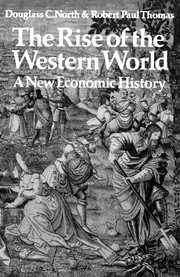Book contents
- Frontmatter
- Contents
- Preface
- PART ONE THEORY AND OVERVIEW
- PART TWO 900–1500
- 3 Property Rights in Land and Man
- 4 Economic Conditions at the End of the Early Middle Ages
- 5 The High Middle Ages: A Frontier Movement
- 6 Thirteenth-Century Europe
- 7 The Fourteenth and Fifteenth Centuries
- PART THREE 1500–1700
- Epilogue
- Bibliography
- Index
3 - Property Rights in Land and Man
Published online by Cambridge University Press: 05 March 2012
- Frontmatter
- Contents
- Preface
- PART ONE THEORY AND OVERVIEW
- PART TWO 900–1500
- 3 Property Rights in Land and Man
- 4 Economic Conditions at the End of the Early Middle Ages
- 5 The High Middle Ages: A Frontier Movement
- 6 Thirteenth-Century Europe
- 7 The Fourteenth and Fifteenth Centuries
- PART THREE 1500–1700
- Epilogue
- Bibliography
- Index
Summary
Before we explore these six centuries in more detail, it is well to specify much more precisely the explanatory theory implicit in the previous chapters.
The pressure to change property rights emerges only as a resource becomes increasingly scarce relative to society's wants. In the world of the tenth century, at the point where we entered into it, land was abundant and therefore not worth the cost of devising exclusive rights to its use. When one piece of land was taken up, more was always available. Because the countryside lay under constant threat of ravage by marauding bands of Vikings, Moslems, Magyars or even of native brigands, greater value attached to any areas protected by a fortification and skilled soldiers. Such land, from the very beginning of the manorial system, was never a completely ‘common-property’ resource in the sense that economists use that phrase. Customs and precedents limited its usage to preclude overgrazing and other hazards implicit in common use. We shall see later that manorial regulations grew more restrictive as land became scarce.
Two other basic elements entered into the manorial economy; the functions of protection, and the role of labor. In the matter of protection, the fortified castle and armored knights on horseback, having specialized skills in warfare, provided local security which could never be equalled by any group of peasants ill-armed with primitive weapons and lacking military skills.
- Type
- Chapter
- Information
- The Rise of the Western WorldA New Economic History, pp. 19 - 24Publisher: Cambridge University PressPrint publication year: 1973

